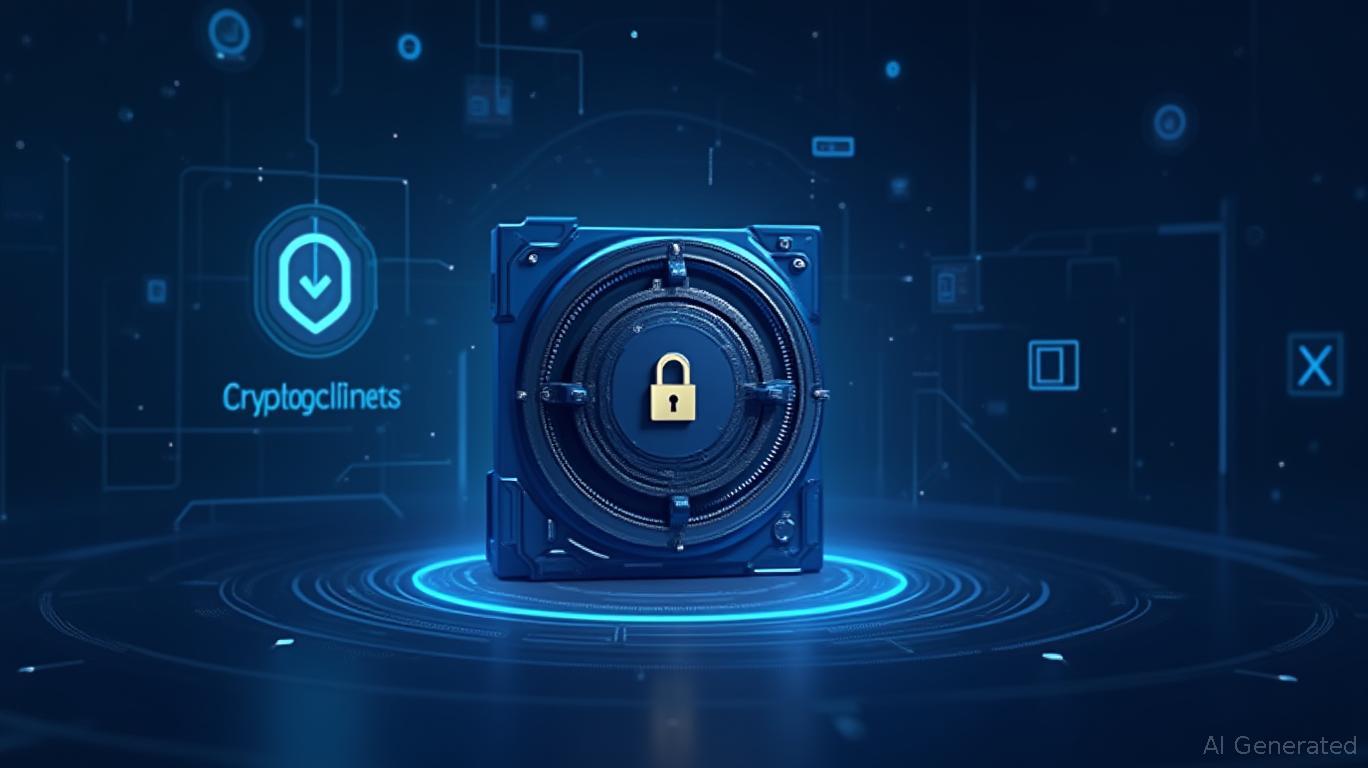Crypto Hack Revives Self-Custody Debate, Highlights CEX Vulnerabilities
In the wake of a significant hack on a prominent centralized crypto exchange (CEX), the debate surrounding self-custody of cryptocurrency has resurfaced. The incident, which involved the theft of a substantial sum, has once again highlighted the vulnerabilities of centralized platforms and the importance of non-custodial storage solutions.
Centralized exchanges, while offering a convenient trading experience, come with inherent risks. These platforms manage customer funds, holding all private keys and thus having complete control over users' assets. This centralization makes them attractive targets for hackers, as evidenced by the numerous attacks on CEXs over the past decade. The $1.5 billion Bybit hack and the collapse of FTX in 2022 serve as stark reminders of the potential consequences when these platforms fail.
The traditional "not your keys, not your Bitcoin" adage remains relevant, emphasizing the need for users to take control of their own funds. When users delegate custody to CEXs, they risk losing their assets due to hacks, account freezes, or mismanagement. The only way to mitigate these risks is to adopt self-custody solutions, where users have full control over their private keys and funds.
Non-custodial wallets offer a range of security features that protect users' assets. These wallets store private keys on the user's device in an encrypted form, providing complete control over funds. Modern wallets go beyond basic encryption, offering multiple layers of security such as passcodes for transaction verification and DApp permissions. Some wallets even eliminate the need for seed phrases by using multiparty computation, spreading private keys across multiple devices to prevent single-point failures.
Advanced security measures in today's wallets include risk detection systems that alert users to potential threats, such as phishing attacks and malicious addresses. These systems help users limit interactions with harmful projects and prevent theft. Additionally, some wallets provide tools to review and revoke permissions granted to DApps, ensuring that users maintain control over their funds.
Responsible wallets also undergo independent security audits and may maintain protection funds to reimburse users in case of security incidents. They educate users on protecting themselves from scams, ensuring that users can safely make the most of their crypto assets.
The recent hack on a CEX underscores the need for users to minimize reliance on centralized platforms and take advantage of the smart security features offered by non-custodial wallets. By spreading assets across multiple wallets and adopting self-custody solutions, users can reduce the risk of significant losses and regain control over their funds.











𝙸 𝚑𝚘𝚙𝚎 𝚢𝚘𝚞’𝚛𝚎 𝚍𝚘𝚒𝚗𝚐 𝚠𝚎𝚕𝚕. 𝙸 𝚠𝚊𝚗𝚝𝚎𝚍 𝚝𝚘 𝚙𝚎𝚛𝚜𝚘𝚗𝚊𝚕𝚕𝚢 𝚛𝚎𝚊𝚌𝚑 𝚘𝚞𝚝 𝚋𝚎𝚌𝚊𝚞𝚜𝚎 𝚠𝚎’𝚛𝚎 𝚌𝚞𝚛𝚛𝚎𝚗𝚝𝚕𝚢 𝚠𝚒𝚝𝚗𝚎𝚜𝚜𝚒𝚗𝚐 𝚊 𝚙𝚒𝚟𝚘𝚝𝚊𝚕 𝚖𝚘𝚖𝚎𝚗𝚝 𝚒𝚗 𝚝𝚑𝚎 𝚌𝚛𝚢𝚙𝚝𝚘 𝚖𝚊𝚛𝚔𝚎𝚝 𝚝𝚑𝚊𝚝 𝚢𝚘𝚞 𝚜𝚒𝚖𝚙𝚕𝚢 𝚌𝚊𝚗’𝚝 𝚊𝚏𝚏𝚘𝚛𝚍 𝚝𝚘 𝚖𝚒𝚜𝚜. 𝙱𝚒𝚝𝚌𝚘𝚒𝚗 𝚒𝚜 𝚌𝚞𝚛𝚛𝚎𝚗𝚝𝚕𝚢 𝚜𝚒𝚝𝚝𝚒𝚗𝚐 𝚊𝚝 75𝚔, 𝚊𝚗𝚍 𝚊𝚕𝚕 𝚜𝚒𝚐𝚗𝚜 𝚙𝚘𝚒𝚗𝚝 𝚝𝚘 𝚊 𝚜𝚝𝚛𝚘𝚗𝚐 𝚌𝚕𝚒𝚖𝚋—𝚙𝚘𝚝𝚎𝚗𝚝𝚒𝚊𝚕𝚕𝚢 𝚝𝚘 100𝚔 𝚘𝚛 𝚎𝚟𝚎𝚗 150𝚔 𝚒𝚗 𝚝𝚑𝚎 𝚗𝚎𝚊𝚛 𝚏𝚞𝚝𝚞𝚛𝚎.
𝚃𝚑𝚒𝚜 𝚒𝚜 𝚎𝚡𝚊𝚌𝚝𝚕𝚢 𝚝𝚑𝚎 𝚔𝚒𝚗𝚍 𝚘𝚏 𝚖𝚘𝚖𝚎𝚗𝚝 𝚜𝚖𝚊𝚛𝚝 𝚒𝚗𝚟𝚎𝚜𝚝𝚘𝚛𝚜 𝚠𝚊𝚒𝚝 𝚏𝚘𝚛.
𝚄𝚗𝚕𝚒𝚔𝚎 𝚝𝚛𝚊𝚍𝚒𝚝𝚒𝚘𝚗𝚊𝚕 𝚜𝚝𝚘𝚌𝚔𝚜, 𝚠𝚑𝚒𝚌𝚑 𝚌𝚞𝚛𝚛𝚎𝚗𝚝𝚕𝚢 𝚘𝚏𝚏𝚎𝚛 𝚖𝚒𝚗𝚒𝚖𝚊𝚕 𝚛𝚎𝚝𝚞𝚛𝚗𝚜 𝚞𝚗𝚕𝚎𝚜𝚜 𝚢𝚘𝚞’𝚛𝚎 𝚒𝚗𝚟𝚎𝚜𝚝𝚒𝚗𝚐 𝚕𝚊𝚛𝚐𝚎 𝚜𝚞𝚖𝚜, 𝚌𝚛𝚢𝚙𝚝𝚘𝚌𝚞𝚛𝚛𝚎𝚗𝚌𝚢 𝚘𝚏𝚏𝚎𝚛𝚜 𝚑𝚒𝚐𝚑-𝚢𝚒𝚎𝚕𝚍 𝚘𝚙𝚙𝚘𝚛𝚝𝚞𝚗𝚒𝚝𝚒𝚎𝚜—𝚎𝚜𝚙𝚎𝚌𝚒𝚊𝚕𝚕𝚢 𝚠𝚑𝚎𝚗 𝚢𝚘𝚞’𝚛𝚎 𝚠𝚘𝚛𝚔𝚒𝚗𝚐 𝚠𝚒𝚝𝚑 𝚝𝚑𝚎 𝚛𝚒𝚐𝚑𝚝 𝚐𝚞𝚒𝚍𝚊𝚗𝚌𝚎 𝚊𝚗𝚍 𝚝𝚘𝚘𝚕𝚜. 𝚃𝚑𝚎 𝚖𝚊𝚛𝚔𝚎𝚝 𝚒𝚜 𝚊𝚌𝚝𝚒𝚟𝚎, 𝚝𝚑𝚎 𝚖𝚘𝚖𝚎𝚗𝚝𝚞𝚖 𝚒𝚜 𝚜𝚝𝚛𝚘𝚗𝚐, 𝚊𝚗𝚍 𝚝𝚑𝚒𝚜 𝚒𝚜 𝚢𝚘𝚞𝚛 𝚌𝚑𝚊𝚗𝚌𝚎 𝚝𝚘 𝚝𝚊𝚔𝚎 𝚊 𝚛𝚎𝚊𝚕 𝚙𝚘𝚜𝚒𝚝𝚒𝚘𝚗 𝚋𝚎𝚏𝚘𝚛𝚎 𝚝𝚑𝚎 𝚗𝚎𝚡𝚝 𝚜𝚞𝚛𝚐𝚎.
𝚈𝚘𝚞’𝚛𝚎 𝚗𝚘𝚝 𝚍𝚘𝚒𝚗𝚐 𝚝𝚑𝚒𝚜 𝚊𝚕𝚘𝚗𝚎. 𝙸 𝚠𝚘𝚛𝚔 𝚌𝚕𝚘𝚜𝚎𝚕𝚢 𝚠𝚒𝚝𝚑 𝚊 𝚑𝚒𝚐𝚑𝚕𝚢 𝚛𝚎𝚙𝚞𝚝𝚊𝚋𝚕𝚎 𝚎𝚡𝚙𝚎𝚛𝚝, 𝙲ᴀᴛʜᴇʀɪɴᴇ 𝙴. 𝚁ᴜ𝚜𝚜ᴇʟʟ 𝚠𝚑𝚘 𝙸 𝚌𝚘𝚗𝚗𝚎𝚌𝚝𝚎𝚍 𝚠𝚒𝚝𝚑 𝚝𝚑𝚛𝚘𝚞𝚐𝚑 𝙵𝚊𝚌𝚎𝚋𝚘𝚘𝚔. 𝚂𝚑𝚎 𝚑𝚊𝚜 𝚑𝚎𝚕𝚙𝚎𝚍 𝚌𝚘𝚞𝚗𝚝𝚕𝚎𝚜𝚜 𝚙𝚎𝚘𝚙𝚕𝚎 𝚐𝚛𝚘𝚠 𝚝𝚑𝚎𝚒𝚛 𝚒𝚗𝚟𝚎𝚜𝚝𝚖𝚎𝚗𝚝𝚜 𝚌𝚘𝚗𝚜𝚒𝚜𝚝𝚎𝚗𝚝𝚕𝚢, 𝚊𝚗𝚍 𝚝𝚑𝚎𝚛𝚎 𝚊𝚛𝚎 𝚝𝚎𝚜𝚝𝚒𝚖𝚘𝚗𝚒𝚊𝚕𝚜 𝚊𝚕𝚕 𝚘𝚟𝚎𝚛 𝚜𝚘𝚌𝚒𝚊𝚕 𝚖𝚎𝚍𝚒𝚊 𝚜𝚙𝚎𝚊𝚔𝚒𝚗𝚐 𝚝𝚘 𝚑𝚎𝚛 𝚛𝚎𝚜𝚞𝚕𝚝𝚜. 𝙸’𝚟𝚎 𝚙𝚎𝚛𝚜𝚘𝚗𝚊𝚕𝚕𝚢 𝚜𝚎𝚎𝚗 𝚑𝚎𝚛 𝚜𝚒𝚐𝚗𝚊𝚕𝚜 𝚍𝚎𝚕𝚒𝚟𝚎𝚛 𝚛𝚎𝚊𝚕, 𝚍𝚊𝚒𝚕𝚢 𝚙𝚛𝚘𝚏𝚒𝚝𝚜.